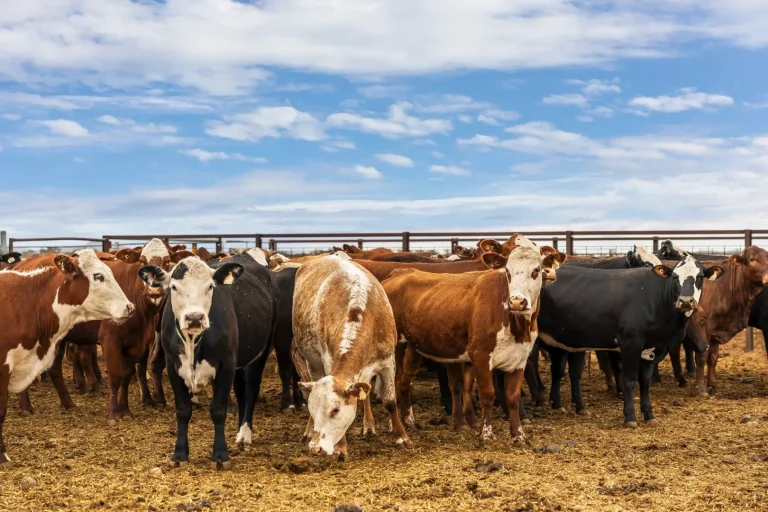Evaluating Market Trends in Australia’s Crop Farming Sector
Successfully evaluating market trends in Australia’s crop farming sector requires sophisticated analytical approaches that combine agricultural economics, commodity market intelligence, and property investment insights to guide strategic decision-making in one of the world’s most dynamic agricultural markets. Australia’s diverse crop production landscape, spanning everything from extensive wheat operations across Western Australia to intensive horticultural enterprises in Queensland’s coastal regions, presents complex market dynamics that directly influence agricultural property values and investment opportunities.
At Agribusiness Horizons, we understand that effective market trend analysis forms the foundation of successful agricultural property investment and operational strategy development. Our comprehensive approach to market evaluation combines real-time commodity data, seasonal forecasting, and long-term structural analysis to provide clients with actionable intelligence that drives superior investment outcomes. Whether you’re considering acquisition of broadacre grain properties or specialized horticultural operations, our market analysis capabilities ensure informed decision-making based on current trends and future projections.
This comprehensive guide examines the methodologies and frameworks essential for understanding Australia’s crop farming market dynamics, from commodity price analysis and seasonal pattern recognition through to technological adoption trends and environmental impact assessments. We’ll address the critical indicators that influence agricultural property values while providing practical approaches for incorporating market intelligence into property investment and operational strategies.
Australia’s Crop Farming Market Structure and Dynamics
Australia’s crop farming sector operates within a complex global market framework where domestic production decisions are influenced by international commodity prices, weather patterns across multiple continents, and evolving trade relationships that affect market access and pricing dynamics. Understanding these interconnected factors becomes essential for accurate trend evaluation and strategic planning.
The sector’s diversity creates multiple market segments with distinct characteristics, from bulk commodity grains traded on international exchanges to specialty crops serving niche markets with premium pricing potential. This segmentation means that trend analysis must account for different market drivers, seasonal patterns, and competitive dynamics that affect each crop category differently.
Regional specialization across Australia creates geographic market clusters where specific crops dominate local agricultural landscapes, supported by climate advantages, infrastructure development, and established supply chains. These regional concentrations influence property values, operational efficiency, and market access advantages that must be considered when evaluating market trends in Australia’s crop farming sector to understand competitive positioning and investment opportunities.
Export orientation characterizes much of Australia’s crop production, making international market conditions, currency fluctuations, and trade policy changes significant factors in domestic market trend evaluation. Properties positioned to benefit from export market access often demonstrate different trend patterns compared to those focused on domestic consumption markets.
Analytical Frameworks for Market Trend Assessment
Commodity Price Analysis and Forecasting
Commodity price trends form the foundation of crop farming market evaluation, requiring systematic analysis of historical price patterns, volatility characteristics, and fundamental supply-demand factors that drive market movements. Professional analysis combines technical chart analysis with fundamental agricultural economics to provide comprehensive price trend assessment.
Seasonal price patterns reflect harvest timing, storage costs, and consumption cycles that create predictable price movements throughout agricultural marketing years. Understanding these patterns enables strategic timing of marketing decisions and property investment activities to optimize financial outcomes.
Global supply-demand analysis examines production forecasts across major producing regions, consumption trend projections, and inventory levels that influence international commodity markets. Australia’s position as a significant exporter means that global market conditions directly impact domestic pricing and profitability trends.
Currency impact assessment addresses how Australian dollar movements affect commodity returns for export-oriented crop enterprises, creating additional complexity in trend evaluation and financial planning processes. Properties with diversified market exposure often demonstrate different risk profiles compared to those dependent on single export markets.
Production Trend Analysis and Yield Forecasting
Agricultural production trends encompass yield improvements, acreage changes, and technological adoption patterns that influence sector productivity and competitive positioning over time. Successful evaluating market trends in Australia’s crop farming sector requires understanding these production trends to identify emerging opportunities and potential market shifts that affect property values.
Yield trend analysis examines historical productivity data, technological improvements, and management practice evolution to project future production potential and competitive dynamics. Properties with superior yield potential or improvement opportunities often demonstrate enhanced long-term value propositions.
Acreage allocation trends reflect farmer responses to relative profitability between different crops, revealing market preferences and competitive dynamics that influence future supply projections. Understanding acreage trends helps identify crops gaining or losing competitive position within agricultural rotations.
Technology adoption patterns significantly influence productivity trends, operational efficiency, and competitive positioning within crop farming sectors. Properties positioned to benefit from technological advancement often demonstrate superior long-term performance compared to those with limited technology integration potential.
Environmental and Climate Impact Assessment
Weather Pattern Analysis and Climate Variability
Climate factors represent critical drivers of crop farming market trends, influencing production variability, input costs, and long-term sustainability considerations that affect property values and operational strategies. Systematic weather pattern analysis enables better understanding of production risks and opportunities across different agricultural regions, forming an essential component of evaluating market trends in Australia’s crop farming sector.
Seasonal forecasting provides short-term production outlook information that influences commodity prices, planting decisions, and marketing strategies throughout growing seasons. Properties in regions with more predictable seasonal patterns often demonstrate lower volatility in production and financial performance.
Long-term climate trend analysis addresses gradual changes in temperature patterns, rainfall distribution, and extreme weather frequency that may affect crop suitability and production systems over investment horizons. Understanding climate trends helps identify regions and crops positioned for enhanced or challenged future performance.
Drought impact assessment examines historical drought patterns, severity impacts, and recovery characteristics that influence agricultural production and market dynamics. Properties with drought resilience through irrigation, soil quality, or diversification often demonstrate superior performance during challenging climatic periods.
Sustainability Trends and Environmental Regulations
Environmental stewardship requirements increasingly influence crop farming operations, affecting input costs, management practices, and market positioning that must be incorporated into comprehensive trend analysis. Understanding sustainability trends helps identify future regulatory impacts and market opportunities.
Carbon farming opportunities create additional revenue streams for crop properties implementing appropriate management practices, representing emerging market trends that enhance property values and operational profitability. Properties positioned for carbon credit generation often attract premium valuations from environmentally focused investors.
Soil health management trends influence long-term productivity potential, input requirements, and environmental compliance obligations that affect operational costs and property values. Properties demonstrating superior soil management often command premium positions in acquisition markets.
Water use efficiency trends affect irrigation costs, regulatory compliance, and operational sustainability in regions facing water resource constraints. Properties with advanced water management systems often demonstrate competitive advantages and enhanced long-term viability.
Technology Adoption and Innovation Trends
| Technology Category | Adoption Rate | Impact on Productivity | Investment Requirements | Strategic Implications |
|---|---|---|---|---|
| Precision Agriculture | Rapidly increasing | High yield optimization | Moderate to substantial | Competitive necessity for modern operations |
| Automation Systems | Early to moderate adoption | Significant labor savings | Substantial initial investment | Long-term operational efficiency gains |
| Data Analytics | Widespread basic adoption | Enhanced decision-making | Moderate ongoing costs | Essential for optimization and compliance |
| Biotechnology | Established in major crops | Substantial yield improvements | Licensing and compliance costs | Critical for competitive positioning |
| Sustainability Technology | Growing rapidly | Environmental compliance | Variable investment levels | Increasingly important for market access |
Technology trends significantly influence crop farming sector evolution, creating opportunities for productivity enhancement while requiring strategic investment decisions that affect property values and competitive positioning. Effective agricultural crop sector trend assessment must incorporate technology adoption patterns and innovation impacts.
Market Access and Supply Chain Evolution
Australia’s crop farming sector benefits from sophisticated supply chain infrastructure and established export market relationships that continue evolving in response to global trade dynamics, consumer preferences, and technological advancement. Understanding supply chain trends provides insights into future market opportunities and competitive advantages.
Processing capacity and location trends affect transportation costs, market access, and value-adding opportunities that influence property values and operational strategies. Properties positioned near expanding processing facilities often benefit from reduced logistics costs and enhanced market access flexibility that provides competitive advantages when implementing Australian agricultural market trend research for strategic positioning.
Export market development creates opportunities for premium positioning and market diversification that reduce dependence on traditional commodity markets. Understanding emerging export opportunities helps identify crops and regions positioned for enhanced performance and growth potential.
Transportation infrastructure improvements enhance market access while reducing operational costs for properties in previously disadvantaged locations. Strategic assessment of infrastructure development plans helps identify emerging opportunities and changing competitive dynamics.
Consumer preference trends toward organic production, sustainability certification, and traceability requirements create market premiums for properties positioned to meet these evolving demands. Understanding consumer trends helps identify future market opportunities and positioning strategies.
Regional Market Dynamics and Specialization Patterns
Geographic Concentration and Competitive Advantages
Regional specialization patterns create distinct market dynamics across Australia’s diverse agricultural landscapes, with specific areas developing competitive advantages in particular crop types based on climate, soil, and infrastructure factors. Understanding these regional dynamics enables strategic property acquisition and operational planning decisions.
Emerging production regions may offer opportunities for early-stage investment and development, while established areas provide stability and proven operational systems. Crop production market evaluation Australia requires understanding of regional lifecycle stages and competitive positioning factors.
Infrastructure development affects regional competitiveness through improved market access, reduced operational costs, and enhanced service availability that influence property values and operational efficiency. Regions benefiting from infrastructure investment often demonstrate enhanced property value appreciation and operational advantages.
Climate advantages create sustainable competitive positioning for specific crops in optimal growing regions, providing natural protection against competition and enhanced profitability potential. Properties in climatically advantaged regions often command premium valuations and demonstrate superior long-term performance.
Market Concentration and Industry Structure
Industry concentration trends affect competitive dynamics, pricing power, and market access opportunities that influence operational strategies and property values. Understanding industry structure helps identify market positioning advantages and potential consolidation opportunities.
Vertical integration patterns create opportunities for enhanced value capture and supply chain control that may affect property acquisition strategies and operational planning decisions. Properties positioned for vertical integration often present enhanced value creation opportunities.
Cooperative and collective marketing arrangements provide market access and negotiating power advantages that benefit participating properties through improved pricing and reduced marketing costs. Understanding cooperative structures helps assess market positioning advantages and operational support systems.
Processing sector consolidation affects market access, pricing dynamics, and contractual relationships that influence property values and operational strategies. Properties with diversified processing access often demonstrate reduced market risk and enhanced operational flexibility.
Agribusiness Horizons’ Market Intelligence and Analysis Services
Our comprehensive approach to crop farming market analysis combines advanced data analytics, industry expertise, and real-time market intelligence to provide clients with actionable insights that drive superior decision-making. We utilize proprietary modeling systems that integrate commodity price data, weather forecasting, and production analytics to deliver precise market assessments.
Our market timing analysis helps clients identify optimal acquisition and disposal opportunities by forecasting pricing cycles, buyer liquidity, and market sentiment patterns. This strategic intelligence enables informed timing decisions that maximize returns while minimizing transaction risks and market exposure.
We provide specialized regional market analysis that examines local competitive dynamics, infrastructure development, and emerging opportunities that affect property values and operational strategies. Our deep understanding of regional market characteristics enables targeted advice that optimizes property positioning and investment outcomes.
Our commodity market research services combine fundamental analysis with technical forecasting to provide comprehensive price outlook information that supports strategic planning and risk management decisions. We monitor global supply-demand dynamics, trade policy developments, and macroeconomic factors that influence agricultural commodity markets.
Our technology trend analysis helps clients understand innovation impacts on productivity, competitiveness, and property values, enabling strategic investment decisions in technology upgrades and modernization programs. We assess emerging technologies and adoption patterns to identify competitive advantages and necessary capability developments.
Strategic Applications of Market Trend Analysis
Property Acquisition and Investment Timing
Market trend analysis provides essential intelligence for strategic property acquisition decisions, enabling identification of optimal timing opportunities and market positioning advantages. Understanding commodity cycles, regional development patterns, and technology trends helps optimize acquisition strategies and investment outcomes. Professional expertise in evaluating market trends in Australia’s crop farming sector becomes essential for identifying properties positioned for superior long-term performance.
Valuation support through market trend analysis ensures accurate property pricing based on current market conditions and future performance projections. Comprehensive trend assessment provides foundation for realistic valuation expectations and competitive positioning strategies.
Risk assessment capabilities help identify potential market challenges and opportunities that may affect property performance over investment horizons. Understanding trend patterns enables development of appropriate risk mitigation strategies and portfolio diversification approaches.
Portfolio optimization strategies utilize market trend intelligence to balance property holdings across different crops, regions, and market exposure levels that optimize risk-adjusted returns. Strategic portfolio development benefits from comprehensive market analysis and trend forecasting capabilities.
Operational Strategy Development
Production planning decisions benefit from market trend analysis that identifies profitable crop opportunities, optimal timing strategies, and resource allocation priorities that maximize operational returns. Understanding market dynamics enables strategic operational adjustments that enhance profitability.
Marketing strategy development utilizes commodity price trends, seasonal patterns, and supply-demand projections to optimize crop marketing decisions and contractual arrangements. Strategic marketing planning based on trend analysis often generates superior pricing outcomes.
Technology investment decisions benefit from trend analysis that identifies necessary capability developments and competitive advantages available through strategic technology adoption. Understanding technology trends enables optimal investment timing and selection strategies.
Environmental compliance planning utilizes sustainability trend analysis to anticipate regulatory changes and market requirements that affect operational practices and investment priorities. Proactive compliance strategy development often generates competitive advantages and reduced operational risks.
Future Market Evolution and Emerging Trends
Australian crop farming continues evolving in response to technological advancement, environmental considerations, and changing global market dynamics that create new opportunities and challenges for sector participants. When evaluating market trends in Australia’s crop farming sector, forward-looking analysis becomes essential for strategic positioning and long-term success.
Sustainability requirements increasingly influence market access, pricing premiums, and operational practices that affect property values and competitive positioning. Properties demonstrating environmental stewardship often achieve superior market positioning and enhanced long-term value appreciation.
Technology integration continues accelerating across crop farming operations, creating productivity advantages and operational efficiencies that influence competitive dynamics and property values. Properties positioned for technology adoption often demonstrate superior long-term performance and market appeal.
Key emerging trends include:
- Carbon farming integration creating additional revenue streams and environmental stewardship recognition
- Precision agriculture adoption enabling optimization of input use efficiency and yield maximization
- Supply chain transparency requirements supporting traceability and sustainability certification programs
- Climate adaptation strategies addressing evolving weather patterns and production challenges
Global market integration continues increasing Australia’s exposure to international trade dynamics, consumer preferences, and competitive pressures that influence domestic market conditions and strategic opportunities. Understanding global trends becomes essential for strategic positioning and risk management planning.
Conclusion
Effective evaluation of market trends in Australia’s crop farming sector requires sophisticated analytical approaches that combine commodity market intelligence, production analysis, and strategic assessment to support informed decision-making across the agricultural property investment spectrum. The complexity and interconnected nature of agricultural markets make professional trend analysis increasingly valuable for achieving optimal outcomes.
Successful trend evaluation enables strategic positioning that capitalizes on emerging opportunities while mitigating potential risks associated with market volatility and structural changes. Properties positioned to benefit from positive trends often achieve superior long-term performance and enhanced market appeal compared to those unable to adapt to changing conditions.
Professional market analysis services provide essential support for navigating complex agricultural markets while identifying strategic opportunities and optimal timing decisions. The investment in comprehensive trend evaluation typically generates substantial returns through improved decision-making and strategic positioning advantages.
As you consider your agricultural market strategy, reflect on these critical questions: How well do you understand the commodity market dynamics affecting your target crops and regions? What technology and sustainability trends might influence your property’s competitive positioning and market appeal? How can you position your operations to benefit from emerging market opportunities and evolving consumer preferences?
For expert guidance on farming sector trend analysis techniques, contact Agribusiness Horizons today. Our specialized market intelligence services provide comprehensive analysis and strategic insights that optimize agricultural property investment and operational decisions. Reach out to Rawdon Briggs at +61 428 651 144 or visit our market timing analysis page to schedule a consultation and learn how our market expertise can enhance your agricultural investment success.



